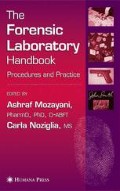Abstract
Since the advent of the microprocessor, affordable storage devices, and networks, more of our daily lives are being recorded in the ones and zeros of the digital world. So it is not surprising that when crimes and torts are committed, there is often evidence of probative value stored or transmitted in digital form. This, in fact, is the definition of digital evidence (DE) according to the Scientific Working Group on Digital Evidence (SWGDE) (1). This DE can be probative in virtually any criminal or civil matter. As a result of this, it appears DE will likely become the predominant form of evidence in the 21st century.
Access this chapter
Tax calculation will be finalised at checkout
Purchases are for personal use only
Preview
Unable to display preview. Download preview PDF.
References
Scientific Working Group on Digital Evidence. Digital evidence: standards and principles. Forensic Sci Commun 2000;2.
Moore G. Cramming more components onto integrated circuits. Electronics 1965;38.
http://sims.berkley.edu/research/projects/how-much-info-2003/. Last accessed on 7/15/2005.
Electronic Crime Scene Investigation, NIJ Publication, July 2001. http://www.ncjrs.org/pdffiles1/nij/187736.pdf
United States Secret Service. Best Practices for Seizing Electronic Evidence Version 2.0. http://www.secretservice.gov/electronic_evidence.shtml. Last accessed on 7/15/2005.
http://www.cops.org/html/forensicprocedure.htm. Last accessed on 7/15/2005.
http://www.guidancesoftware.com. Last accessed on 7/15/2005.
http://www.ilook-forensics.org. Last accessed on 7/15/2005.
http://www.accessdata.com. Last accessed on 7/15/2005.
http://www.ethereal.com. Last accessed on 7/15/2005.
http://www.wildpackets.com. Last accessed on 7/15/2005.
http://www.fbi.gov/congress/congress00/kerr090600.htm. Last accessed on 7/15/2005.
http://www.nsrl.nist.gov/. Last accessed on 7/15/2005.
Chalk R, Frankel MS, Chafer SB. AAAS Professional Ethics Project. American Association for the Advancement of Science Washington, DC 20005. AAAS Publication 80-R-4, 1980.
Author information
Authors and Affiliations
Editor information
Editors and Affiliations
Rights and permissions
Copyright information
© 2006 Humana Press Inc., Totowa, NJ
About this chapter
Cite this chapter
Bianchi, R.P., Pollitt, M. (2006). Digital Evidence. In: Mozayani, A., Noziglia, C. (eds) The Forensic Laboratory Handbook. Forensic Science and Medicine. Humana Press. https://doi.org/10.1385/1-59259-946-X:79
Download citation
DOI: https://doi.org/10.1385/1-59259-946-X:79
Publisher Name: Humana Press
Print ISBN: 978-1-58829-464-7
Online ISBN: 978-1-59259-946-2
eBook Packages: MedicineMedicine (R0)

